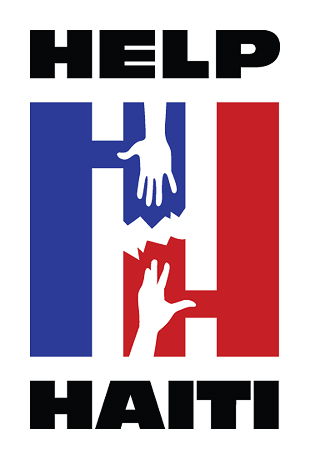Haiti Earthquake Jan 2010...

Missionaries who were in Haiti when the quake hit share their stories.
SPRINGFIELD — Their timing was at first awful — that they should be in Port-au-Prince at all — and then perfectly prescient.
On Jan. 12, four missionaries from Thurston Christian Church left the Haitian capital of Port-au-Prince about a half-hour before the first rumbles of a devastating 7.0 earthquake that would kill as many as 200,000.
“I feel we need to leave,” Etienne “Steve” Prophete, director of the Indianapolis-based Haitian Christian Mission, said to a group of missionaries that included Lloyd Love, Dr. Stephan Ames, Lonne Morse and Emily Gregory. They were standing in Prophete’s Port-au-Prince home at the time.
Prophete wanted to leave because traffic back to Fond-Parisien, a small town on the Haiti-Dominican Republic border, would likely only worsen in the hours to come. But Ames, Love and Morse, recalling their frightening ordeal exactly one week later at the Thurston church, said they also sensed that something else — a premonition? — was bothering Prophete that morning.
And so back to Fond-Parisien — about an hour’s drive east — they went in two vans, to the missionary compounds that house a school, church and clinic, and a cabinet shop that Morse, who owns Lonne’s Cabinet Shop in Springfield, was providing expertise in constructing.
About 20 minutes outside the city, at 4:57 p.m., they felt it. None of them had ever really been in an earthquake before, unless you count when Ames was in Merced, Calif., on Oct. 17, 1989, when the Loma Prieta earthquake hit the San Francisco Bay Area about 100 miles away.
“At first I thought we had two flat tires on the left side of the vehicle,” Ames recalled, “and then suddenly they had re-inflated and the other side was flat.”
Gregory, a forest service worker with the Bureau of Land Management, said it was like “the whole world was jumping up and down and side-to-side. We thought something had blown up.”
Prophete’s son, Thomas Prophete, was driving the lead van with the four Springfield churchgoers as his passengers. He pulled to the side of the road as the quake was still shaking everything in sight, concrete walls and homes collapsing all around them. It lasted perhaps 30 seconds.
“Now I know what people mean when they say the longest 30 seconds of their lives,” said Love, youth pastor at Thurston Christian.
They waited for the other van carrying Steve Prophete and other missionaries from Kentucky, then proceeded on to Fond-Parisien. They passed a truck that had crashed into a telephone pole. Someone had dragged a dead body out and left it by the road.
Women and children were screaming in the streets, said Ames, a family practice physician in Springfield. Everyone was outside of their homes. “No one wanted to be in a building,” he said.
The Springfield foursome had flown to the Dominican Republic on Jan. 5 for what was planned as a 10-day mission. They were returning to a place they had visited last May, the city of Puerto Plato on the island’s northern coast, where they were helping to build a children’s home in conjunction with the Drain-based Mercy League International.
On Jan. 10, they drove to Fond-Parisien to assist Morse with the cabinet shop project. Love and Morse have both known Prophete for years. Prophete invited them to come to Fond-Parisien so that Morse could help construct the cabinet shop where children in the town could build things and make money.
“It’s very exciting because it’s a way for them to be self-sustaining,” Morse said.
On the morning of Jan. 12, they drove into Port-au-Prince to get materials for the cabinet shop, and to visit a church and school affiliated with the Haitian Christian Mission. They then had lunch at Steve Prophete’s home.
After the earthquake hit and they returned to the compound in Fond-Parisien, Ames and two Haitian doctors worked past midnight treating about 50 injured people brought to the compound’s clinic.
“It took me about an hour to clean out one wound that was full of bits and dust,” Ames said of one man’s head injury.
Gregory stayed upstairs, trying to distract children with crayons and card games.
“I’m really squeamish around blood,” she said.
The more severely injured were taken across the border to the Dominican Republic town of Jimani.
The missionaries tried to sleep that night, but large aftershocks rattled the tin roof of the missionary compound’s building where they were staying.
On Thursday, Morse and Ames drove into Port-au-Prince with Prophete to see how they could help. They took Gregory’s camera to document what they found.
“It was every bit as bad as what CNN was showing,” Morse said. “Bodies were piled all over the street, feet and hands sticking out. I finally quit taking pictures. I was so sad I just couldn’t do it anymore.”
The stench of death was overwhelmingly, Ames said.
Prophete’s home in the hills of Port-au-Prince was undamaged, although many homes nearby were destroyed. They got on the roof and looked around.
“One whole hillside was just leveled to the south,” Ames said. “It was unreal.”
They were originally scheduled to fly out that Friday from Port-au-Prince. But the airport was only being used for military landings and takeoffs.
Instead, they flew out of the Dominican Republic city of Santo Domingo that Saturday to Atlanta, then arrived in Portland that Sunday.
“My wish is that people will open their hearts …,” Morse started to say.
“And not forget after three months,” Ames said.
“… and just keep helping,” Morse said.